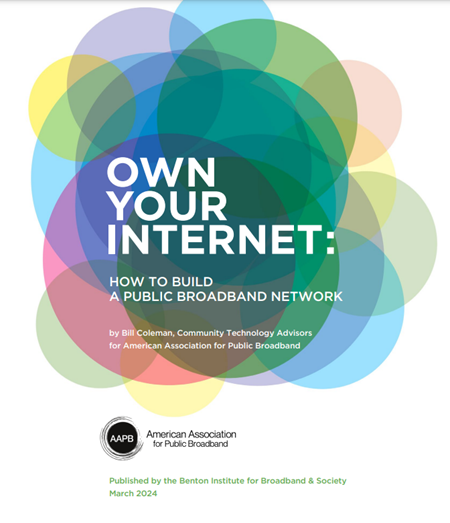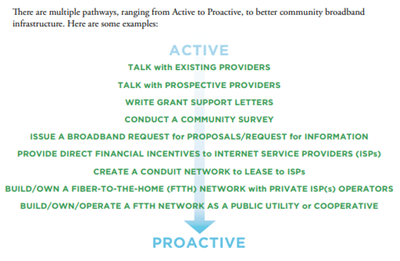
Fast, affordable Internet access for all.

More cities and towns across the U.S. are exploring municipal broadband as an increasingly attractive and effective approach to bring ubiquitous, and affordable, high-speed Internet to its residents and businesses.
Now, a new handbook has been published that is tailored to guide local officials in navigating the logistical, technical, financial, and political challenges along the way.
Hot off the presses this week comes “Own Your Internet: How To Build A Public Broadband Network” – a project of the American Association for Public Broadband (AAPB), published in partnership with the Benton Institute for Broadband & Society.

“This handbook is a key part of AAPB's strategy to double the number of public networks in the next five years, supporting communities in leveraging these networks for economic development, smart city initiatives, and attracting new residents," AAPB Executive Director Gigi Sohn said in announcing the handbook release.
Benton Executive Director Adrianne B. Furniss said the collaboration in publishing the guide made sense because “every community has a stake in this broadband moment—and they must have the tools they need to decide how they will meet their connectivity needs. We trust that this handbook is one of many tools communities will use to assess their situation and plan for a connected future.”
Authored by longtime technology consultant and noted broadband-for-all advocate Bill Coleman, the handbook “sets out, in simple terms, the key decisions a community and its leaders must make, as well as the concrete steps they must take to build a successful public network.”
The introduction begins by exploring two important questions – what are the best roles for the public sector in broadband infrastructure and which broadband problems are you trying to solve? It then covers several of the most common answers engaged communities often give to the latter question: affordability, universal service, lack of competition, and outdated infrastructure.

The first part of the handbook outlines the concrete steps communities need to take in order to put together a solid plan. The following section provides a framework for implementing the plan as well as guidance about the all-important questions around funding and financing.
Readers are then presented with six case studies of existing public broadband systems – from the full-on municipal broadband approach used by Fairlawn, Ohio to create FairlawnGig and the cooperative model used by Consolidated Telephone Cooperative (CTC) in Brainerd, Minnesota to the creative Communications Union Districts (CUD) at the center of Vermont’s plan to expand high-speed Internet access across the entire state.
Of course, building modern telecommunication infrastructure almost always requires outside help, and to that end the handbook also provides a list of resources that can assist communities along the way, which includes names and contact information for expert law firms, construction firms, financial advisors, marketing consultants, equipment vendors, as well as links to grant application portals, management platforms, operational and business support systems, and firms that design, build, and operate networks.
You can find the full handbook here.
